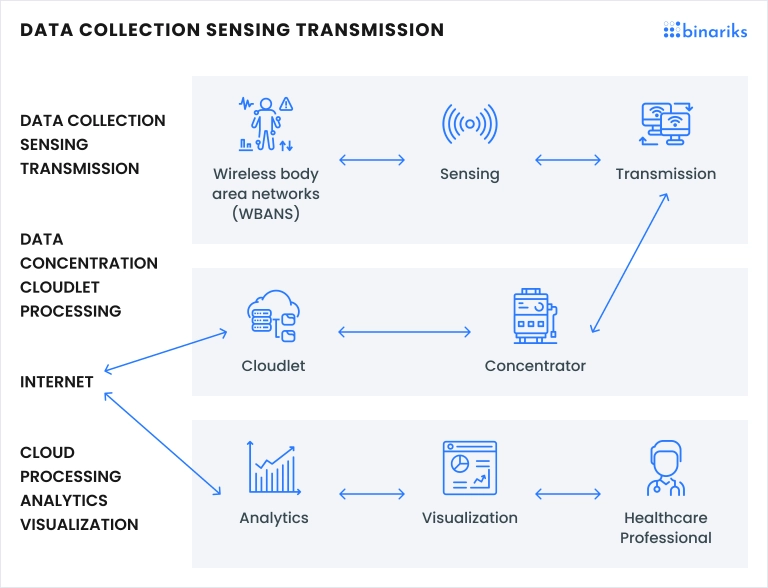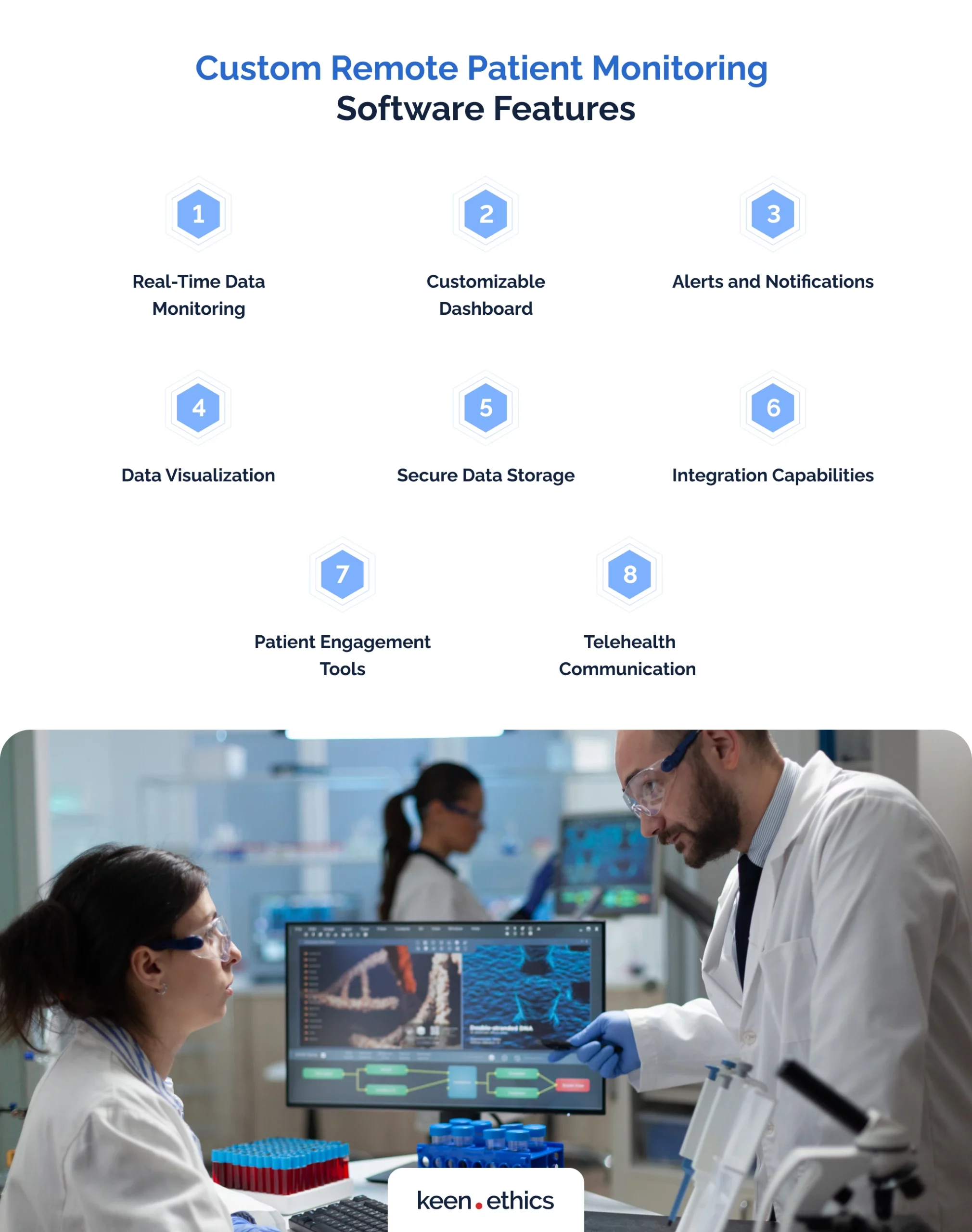Revolutionize Medical Care With Remote Individual Keeping Track Of Services
Remote individual tracking services have actually arised as a transformative tool in this altering environment, providing an appealing option to lots of medical care obstacles. As we dig into the complexities of remote individual surveillance services, it becomes obvious that the ramifications reach far beyond convenience and effectiveness, forming a future where healthcare is more proactive, individualized, and accessible.
Advantages of Remote Individual Monitoring
Remote Client Monitoring offers a multitude of benefits in improving health care distribution and client end results - remote patient monitoring platform. Among the primary benefits of remote individual tracking is the capability to supply continual treatment outside of standard medical care settings. By from another location tracking important indications, symptoms, and various other wellness data in real-time, doctor can identify possible issues early, resulting in timely interventions and boosted health and wellness end results for individuals
Additionally, remote individual tracking enhances client engagement and empowerment. Patients end up being more associated with their care as they can proactively join checking their health and wellness and receiving customized comments from health care specialists. This increased involvement usually results in much better adherence to therapy strategies and a higher sense of control over one's wellness.
Additionally, remote patient surveillance has actually been shown to reduce health care prices by stopping unnecessary medical facility readmissions, lessening emergency clinic gos to, and optimizing source utilization. By proactively taking care of persistent problems and determining health and wellness problems early on, remote surveillance can aid prevent pricey problems and enhance total healthcare effectiveness.
Influence on Healthcare Accessibility
Offered the demonstrated advantages of remote client surveillance in enhancing patient results and reducing health care expenses, it is imperative to explore its influence on healthcare accessibility. Remote individual tracking solutions play an essential duty in enhancing medical care access by overcoming geographical obstacles. People staying in remote or underserved areas can now receive quality care without the requirement to take a trip cross countries to health care facilities. This is especially advantageous for individuals with chronic problems or movement concerns that may locate it testing to gain access to typical healthcare services regularly.
Furthermore, remote individual monitoring boosts health care accessibility by offering continuous monitoring and prompt treatments, reducing the need for frequent in-person brows through. This not just conserves time for both clients and doctor yet likewise makes certain that patients obtain timely care, bring about enhanced wellness outcomes. Furthermore, by allowing health care experts to remotely monitor a bigger variety of patients, remote person surveillance services assist in addressing the lack of doctor in specific regions, ultimately improving total health care accessibility for a wider population.
Enhancing Patient Results
Exactly how can remote client tracking solutions positively impact individual outcomes in the health care landscape today? By allowing continuous monitoring of patients' health and wellness metrics outside standard health care setups, remote person surveillance solutions play an essential duty in improving individual results - software for remote patient monitoring. Via the real-time surveillance of crucial indicators, symptoms, and medication adherence, medical care suppliers can immediately step in and adjust therapy strategies as needed, leading to much better health and wellness end results
Remote client tracking additionally encourages individuals to take an extra active duty in managing their health and wellness. By offering them with tools to track their progress and interact with healthcare providers from another location, clients are a lot more engaged and encouraged to stick to treatment routines. This increased patient engagement commonly results in boosted wellness end results, lowered hospital readmissions, and much better total lifestyle.
Additionally, remote individual tracking permits early detection of prospective wellness difficulties, enabling prompt interventions that can stop exacerbations of persistent conditions or avoidable emergency clinic brows through. By assisting in aggressive and tailored care, remote individual monitoring solutions add substantially to enhancing individual results and driving positive health care outcomes.
Overcoming Implementation Difficulties
To efficiently incorporate remote individual tracking services into health care systems, organizations should attend to essential execution obstacles head-on. Among try this site the primary barriers is making certain the interoperability of numerous monitoring tools and systems with existing electronic health record (EHR) platforms. Compatibility issues can hinder the seamless transmission of patient information, compromising the efficiency of remote tracking. In addition, information safety and personal privacy worries present considerable obstacles. Doctor need to follow stringent laws to secure delicate client details transferred via remote tracking technologies.
Moreover, resistance to alter amongst health care experts can hamper the adoption of remote patient surveillance services. Educating programs and instructional efforts are vital to familiarize personnel with the new innovations and procedures. Financial constraints additionally provide a hurdle, as preliminary investments in facilities and modern technology can be significant. Organizations require to very carefully evaluate the roi and lasting cost financial savings connected with remote surveillance to validate the expense.
Future Trends in Remote Surveillance
Remote monitoring Discover More innovations are positioned to reinvent the health care market by enhancing patient treatment and enhancing treatment end results. These innovations can assess big quantities of client data in real-time, providing health care service providers with predictive analytics and useful insights to improve decision-making and customize patient care.
This trend enables for precautionary and positive health care treatments, leading to better management of persistent problems and early detection of potential health and wellness problems. Generally, the future of remote monitoring holds fantastic prospective for progressing medical care shipment and boosting client end results.

Conclusion
To conclude, remote person tracking solutions have the possible to transform medical care by enhancing person end results, increasing availability to care, and conquering implementation challenges. As technology remains to advancement, the future patterns in remote monitoring are encouraging, with the potential to even more improve health care distribution and client care. Applying remote monitoring services can cause a more effective and effective healthcare system, ultimately benefiting both patients and healthcare providers.

How can remote individual surveillance services positively affect patient end results in the medical care landscape today? By enabling continual tracking of clients' wellness metrics outside standard health care setups, remote person surveillance solutions play an essential duty in boosting person results.In conclusion, remote patient tracking solutions have the possible to reinvent health care by enhancing person results, enhancing ease of access to care, and getting over implementation obstacles.